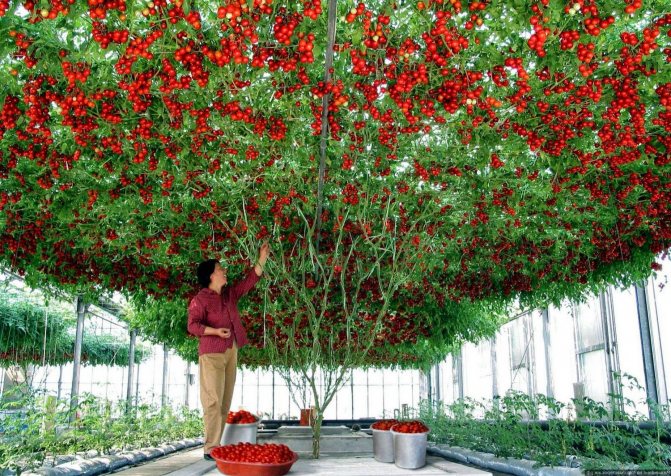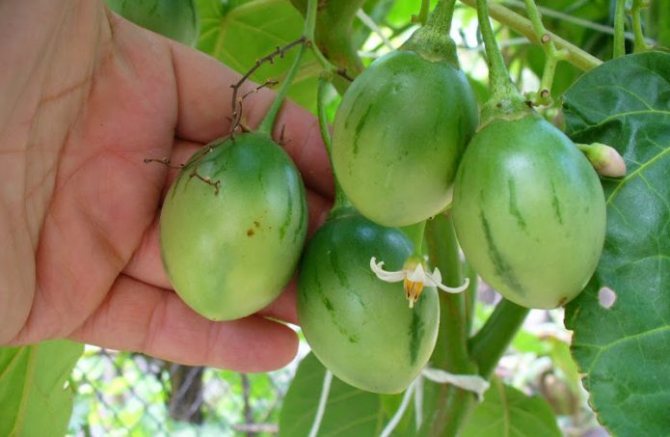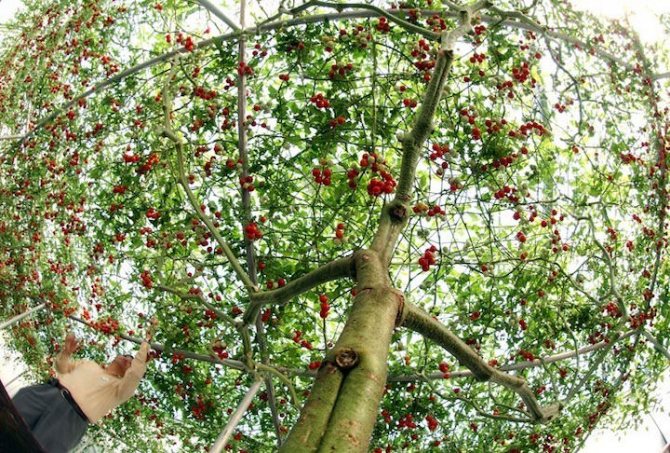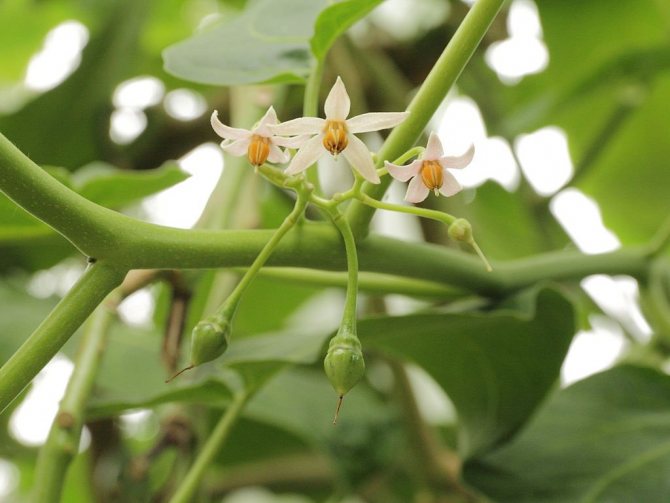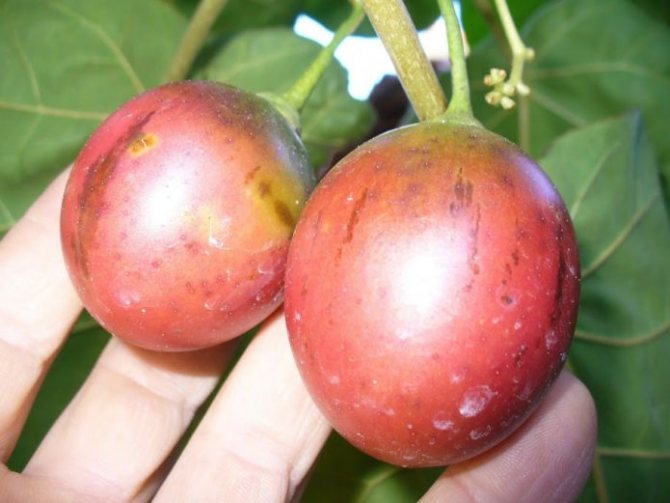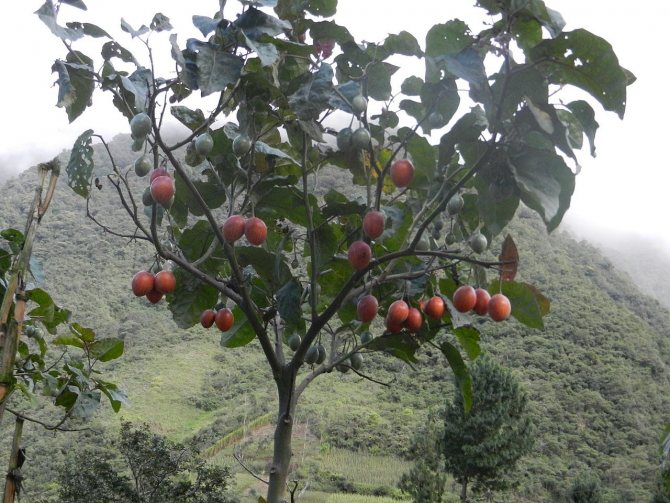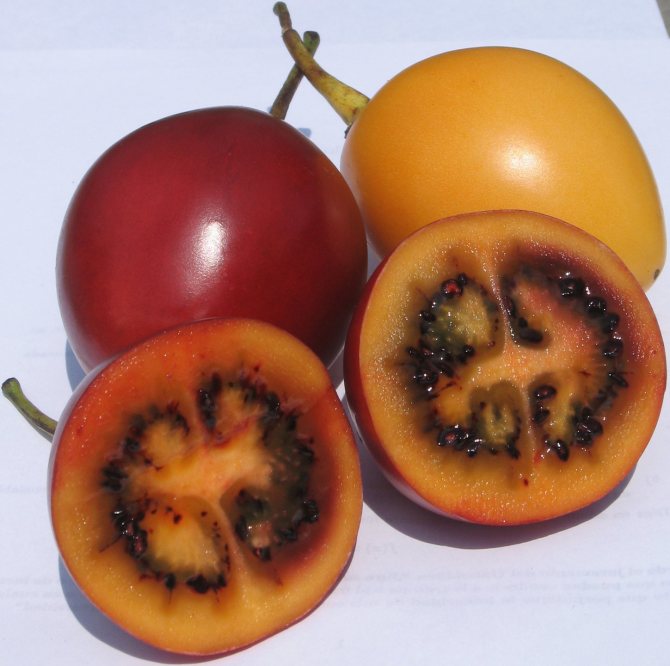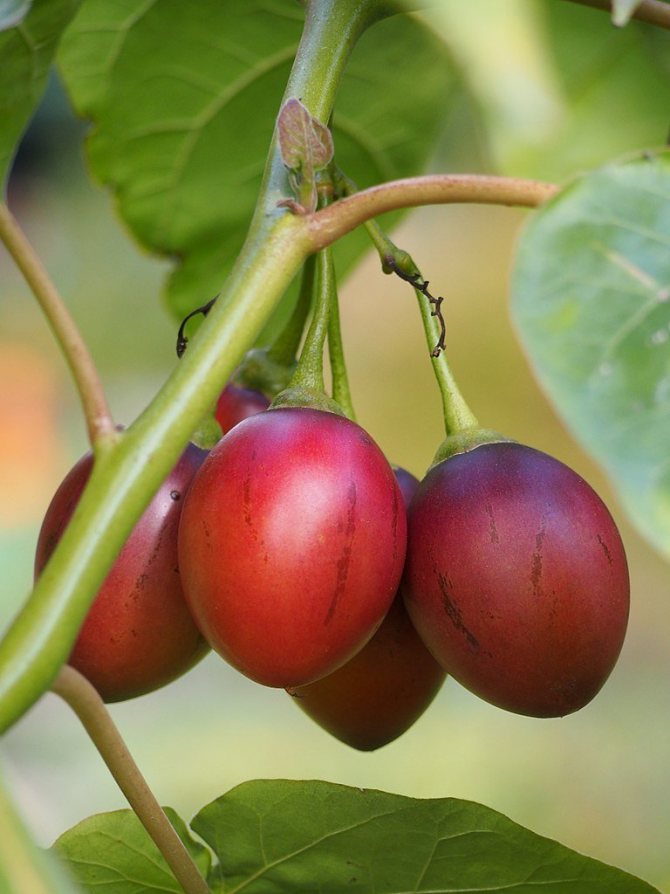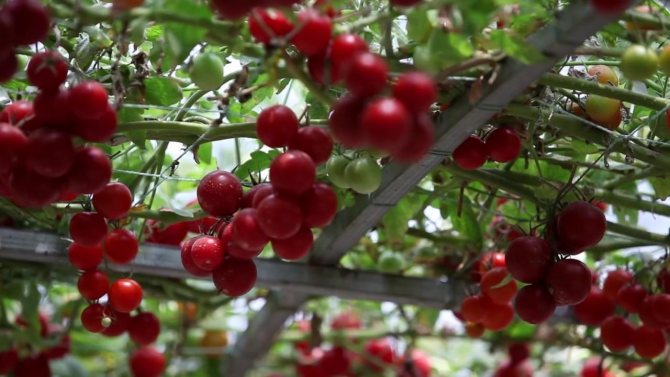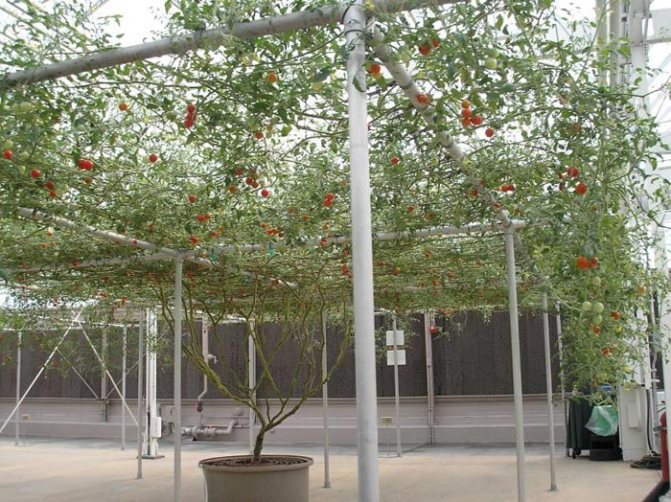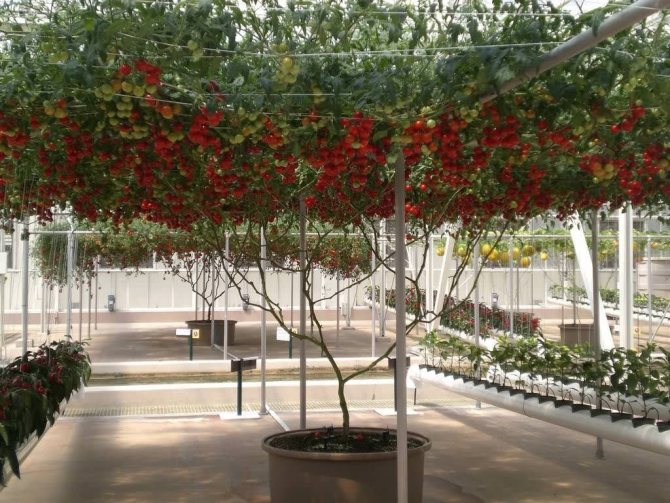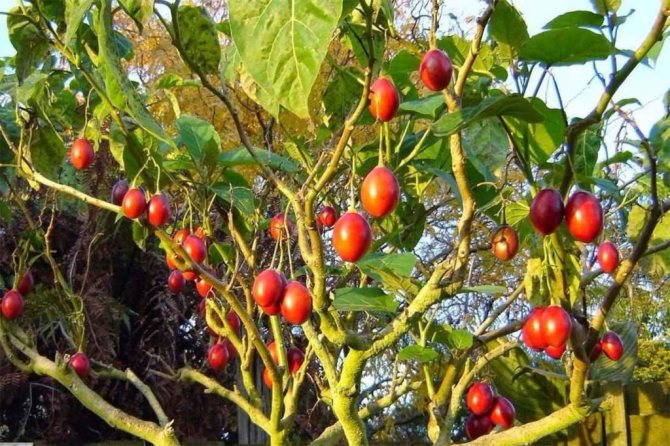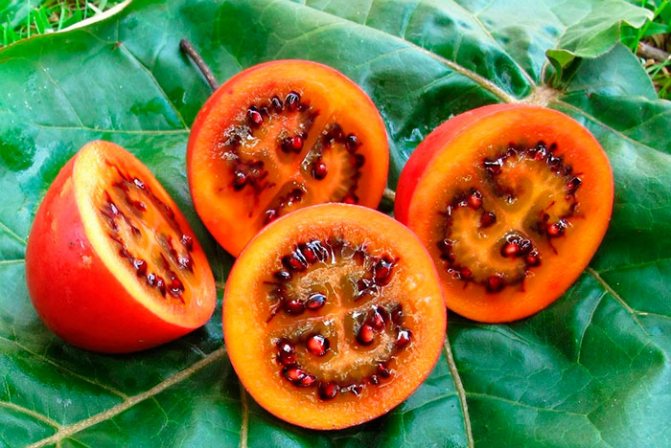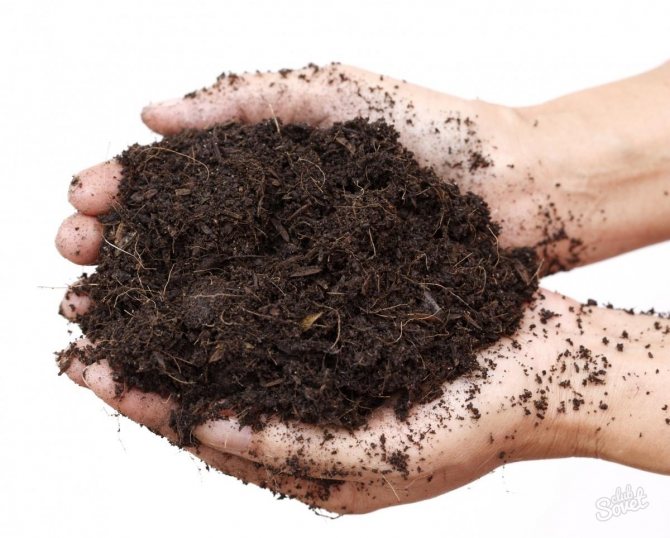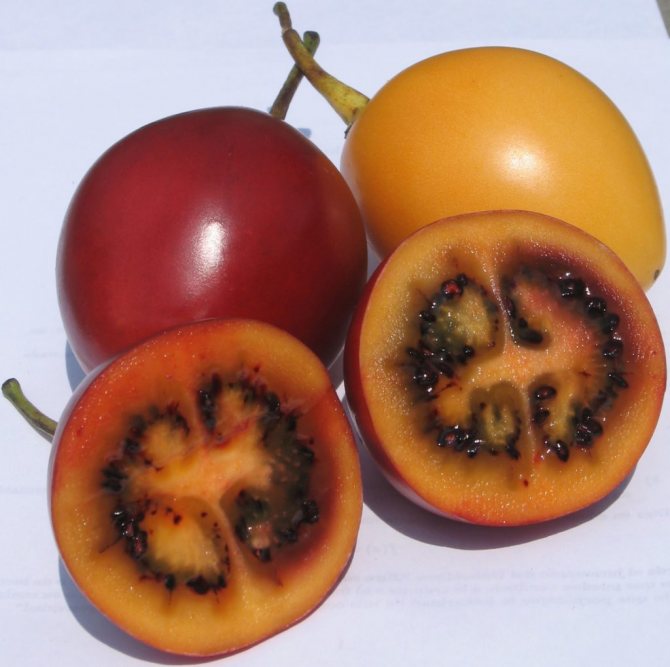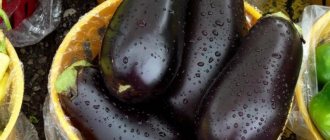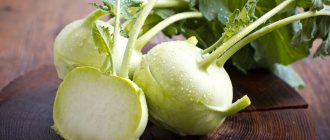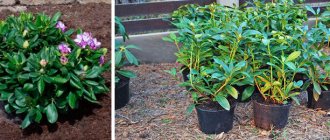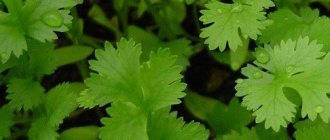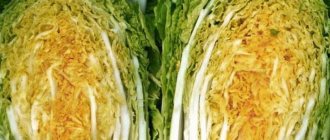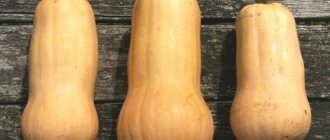Among the fruit-bearing plants that can be grown in indoor format, the cyfomandra has become a real hit in recent years. Having moved from greenhouses and botanical gardens to rooms, the legendary (and luxurious) tomato tree further enhanced the decorativeness of greenery, but did not lose its ability to bear fruit. Getting a harvest of fragrant, sweet and exotic fruits for the table and at the same time becoming the owner of a real caddy exotic is a temptation for many. The inimitable tsifomandra is not an easy plant. She has a lot of care requirements and has one smelly surprise in store.
Tsifomandra - we grow a tomato tree in the room. <>
Tsifomandra, tamarillo and other names of the same plant
The tomato tree is a beautiful name for a unique fruiting plant, around which there has been more and more confusion lately. The tomato tree was originally called beetroot tsifomandru (Cyphomandra betaceae). But the emergence of a commercial name tamarillo in New Zealand (trademark derived from Maori "superiority" and "yellow"), and then official recognition tamarillo beetroot (Solanum betaceum) as an independent plant species from the Solanaceae family radically changed the situation.
After all, the status of the tsifomandra itself remained “unresolved”. There are many disputes about the status of cyphermandres and the need to retrain them from a separate species to tamarillo (or vice versa), a possible complete change of names. In the meantime, scientists have not decided yet and the plant continues to study, it is worth remembering that tsifomandra, tamarillo, tamamoro, and even octopus - all these are the names of the same plant, which remains original, large, fruitful and special in everything.
More confusion with regular tomatoes. One of the large, fruiting with stunning clusters of fruits, the tomato variety got its name in honor of the cyfomandra, but we are talking about the classic, fruiting tomatoes in the year of sowing, and not at all about a perennial fruit tree.
The best option is not to pay so much attention to the name as to the characteristics of the plant, because real tomato trees are certainly different from tomatoes, they are perennial, with other fruits and it is difficult to confuse them with something.
Cyfomandras are especially popular in countries with subtropical and tropical climates, where their fruiting can be enjoyed all year round. This plant migrated to us from Southern Europe and the Americas, where commercial plantings can boast of a special scope in the territories of Brazil. It is believed that the European history of cyphermandras began only in the last century and we owe its status as a fashionable culture, first of all, to the French.
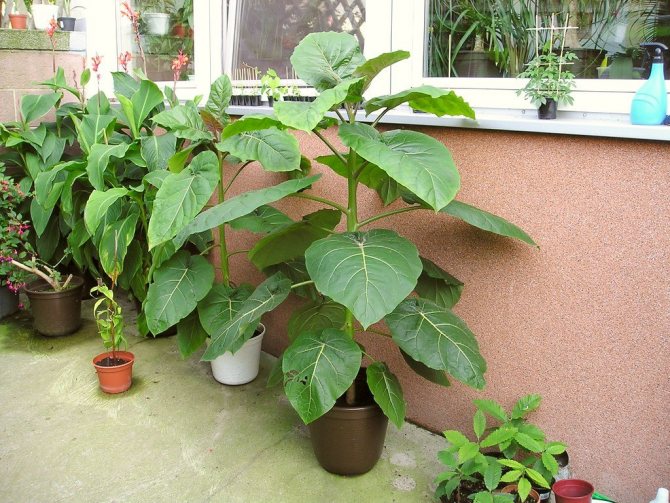
Indoor tsifomandra grows to a maximum of 2.5 meters.
Reviews, opinions of summer residents
The culture is not very popular among gardeners, so there are not so many reviews about the tomato tree, and not about the variety of tomatoes. People celebrate the great taste of the fruit, which can be eaten fresh or used to make seasonings. A resident of Sochi, Sergei, assures that in the conditions of his city, the tsifomandra can withstand frosts down to -3 ° C. But be careful: the culture is often attacked by slugs.
Tsifomandra is not a plant for a wide range of summer residents.Due to the nuances of cultivation, it is planted by exotic lovers, for whom the benefits and taste of tamarillo fruits outweigh the disadvantages of a tropical tree.
Description of the plant
Tsifomandras are large for rooms, but quite compact by natural standards, fruiting evergreen trees and shrubs, easily changing the form of growth during their formation and surprising, first of all, by the speed of their development. True, at the very beginning, within several months after sowing, it is difficult to assess this quality, because the plants develop very slowly, adding only a few tens of centimeters.
The thing is that the growth of the aboveground parts of the cypheromandra begins only after the formation of a powerful rhizome and occurs with a constant increase in the rate of development. After 2.2-5 months, the plant begins to develop rapidly, transforming before our eyes and increasing at least 1 m during the first year.
Under favorable conditions, when grown in open ground, in a greenhouse, with illumination or in a heated greenhouse, the cyfomandra is capable of exceeding 4 m in height. Indoor tsifomandra is limited to a maximum of 2.5 m, but even the largest varieties of ordinary tomatoes are inferior to them in size and always differ from them.
The rhizome is superficial. The plant can grow aerial roots. The branches of a tomato tree are very thin, fragile, the bark gradually becomes tree-like, but this does not affect fragility. Thanks to the long leaf stalks and graceful shoots, the cyfamander seems airy, it is not massive, but rather refined, translucent, touchingly delicate. The crown diameter is always half the height.
The leaves of cyphermandras are not just large (up to 30 cm), but very beautiful, flawlessly whole, heart-shaped-oval with slightly pointed tips, of a light grassy green color with light veins. They sit on long petioles alternately, with rather long internodes. The foliage seems to shine through in the sun, creating the effect of translucency, but at the same time it surprises with its glossy shine and the presence of small villi.
The sparse arrangement of the leaves allows the cyfomandra to appear as a graceful, translucent miracle. Their unpleasant smell may come as a surprise, but if you don't contact the greens, you won't even notice, and in the garden and greenhouse, the specific aroma performs the function of repelling pests perfectly.
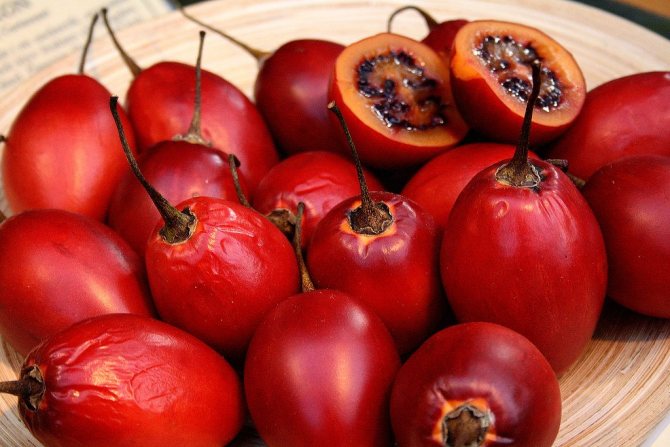

Tamarillo fruits are poorly preserved and only relatively transportable. <>
Flowering and fruiting of the tsifomandra
The flowering of cyphermandras is very impressive. Light lilac or white, collected in symmetrical brushes, flowers seem too elegant for a fruiting giant. They are fragrant, with a beautiful five-petal calyx. Tsifomandra, when grown alone without being removed to fresh air, requires artificial pollination.
Fruiting is the main advantage and pride of cyphermans. The harvest of tomatoes from cyfomandra can be obtained within 7, and in greenhouses and rooms - and 8-9 months or continuously. The length of the fruiting period always depends on temperatures and lighting.
Fruiting begins only from the second year, in normal volumes - from the third year when grown from seeds. The height of the plant affects the quality and timing of fruiting. Tomato trees in ideal conditions are capable of producing from 10 kg of harvest per year.
The fruits of the tomato tree are only distantly similar to tomatoes, even their stalk is more reminiscent of plums, passionfruit, and last of all - about cream tomatoes. Dark orange, red-brown, yellowish, purple or pink-red after ripening, ovoid or plum-shaped up to diamond-shaped, the two-chambered fruits of the tomato tree are collected in compound fruits and can weigh up to 100 g with a length of 5 to 10 cm.
They are collected in typical tomato-like cluster fruits - very neat-looking, hanging bunches.Each fruit contains up to 12 pseudo-tomatoes. The shiny skin is quite hard, with a bitter aftertaste. And the salty-sweetish-sour flesh of the varieties differs in the degree of sourness and rather resembles not tomatoes, but gooseberries with apricots and strawberries at the same time.
The pulp is quite light, pinkish-golden, translucent, the shades vary depending on the variety. Usually the fruit is eaten, peeling not only the skin, but also the thin layer of pulp underneath.
Tamarillo fruits are poorly preserved and only relatively transportable. Fresh are stored only in the cold for up to 1 week, so they are most often preserved and processed. They are famous for their high levels of pectin, vitamins and microelements.
The seeds hidden inside the fruit of a tomato tree are no different from physalis seeds, except that the "discs" are almost always painted black.


During the first months, the tsifomandra builds up the root system, but then it grows sharply.
Features of tomato Sprut F1
Let us consider in more detail the description of the octopus tomato, which has recently become very popular.
This unique plant has a strong root system. The tomato tree also has a powerful tree trunk and lush foliage.
It is perfect for outdoor cultivation. It can grow more than 3 m in height and is practically unlimited in growth.
The plant does not bear fruit for the first 8 months. This time is meant for getting a powerful trunk.
Outwardly, it resembles a real tree, the diameter of which reaches 6 m.
To support the branches, a special frame, trellises or wooden stakes are used.


During fruiting, you can get a huge amount of tomatoes. They are distinguished by excellent taste. Small, deep red tomatoes.
Types and varieties of cyphermandras
In addition to the beetroot tsifomandra, seeds are very rarely found on sale. tsifomandry tree (Cyphomandra abutiloides) with coarser twigs and yellow or orange, almost perfectly round, soft-edged fruits. The berries are sweeter.
The cyfomandra has about 30 varieties. They differ only in the color of the fruit, pulp and taste - from sweet to sour. Our variety is often not indicated and buying any tamarillo is almost like a lottery. The best way to choose the variety you like is to taste its fruits.
The only exception is the hybrid variety "Octopus", its main advantage is considered fruiting in the first year and the ability to grow tamarillo as an annual tree for open soil.
Advantages and disadvantages
The main advantages of the variety include the following:
- Excellent taste.
- Long-term fruiting.
- Can be stored for a long time after collection.
- Unpretentious care.
- High productivity.
- Resistant to temperature changes.
- Good immunity against nightshade diseases.
There are not many disadvantages of the Tsifomandra variety, and even those listed below are insignificant.
- A garter to the support is required.
- It is necessary to make top dressing.
Growing conditions for room cypher
Tsifomandru is difficult to grow, this plant is large, demanding and not for everyone. It can be cultivated as indoor, greenhouse, greenhouse woody or as a garden tub with wintering indoors.
They are increasingly trying to grow tamarillo in the open field as an annual, throwing out the plant after the arrival of frost, with annual seedlings growing or preliminary cutting and rooting of cuttings the next year. Seeds of hybrid tamarillo capable of bearing fruit in the first year are sown for seedlings along with tomatoes, subsequently resorting to a similar cultivation tactic.
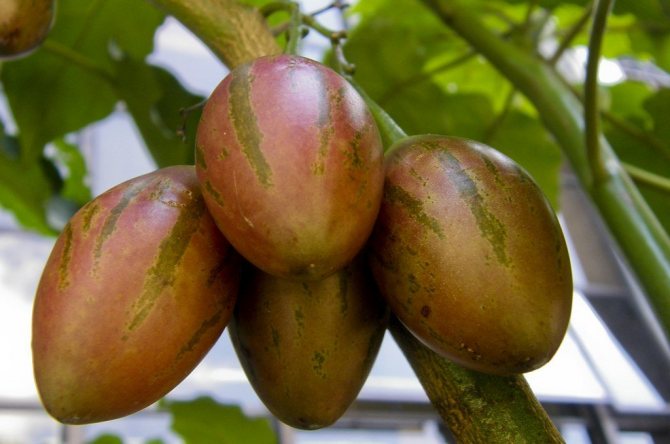

Beetroot Cyphomandra (Cyphomandra betaceae). <>
Lighting and placement
This is a sun-loving plant, for which, while maintaining compactness at an early age, only places on the windowsills are suitable, and when it reaches its true size - as close as possible near the windows. The brightest places in the house are the only option for a cypher.
Tsifomandry will prefer partially southern eastern and western windows. They grow beautifully in the southeast, but any lightest window in the house is fine for them. They can be placed near observation windows, on heated balconies and loggias.
Tomato trees in winter, or rather from mid-autumn, especially if fruiting continues, it is advisable to supplement the illumination, increasing not so much the intensity of light as the duration of daylight hours at least up to 11 hours. The lack of additional lighting leads to the loss of parts of both fruits and foliage.
When choosing a place for tamarillo, you should take into account its size. They require a lot of space, the leaves emit an unpleasant odor, and fragile shoots do not tolerate unnecessary contacts, therefore they place it only in large rooms, away from places of rest and active pastime, where the tomato tree can develop freely.
Temperature regime and ventilation
Tsifomandry feel great in summer at any temperature above 20 degrees Celsius. The main difficulties are associated with the cool wintering of the plant. To preserve the leaves and continue fruiting, you need to maintain a temperature of at least 15 degrees.
If the plant has passed into the dormant stage, it is transferred to the cool - but within 12-15 degrees Celsius. The minimum temperature that the cyphermandras can withstand is 2 degrees of heat, while after the indicators fall below 10 degrees, the plant sheds its leaves and stops growing.
True, it should be borne in mind that even short negative temperatures usually do not cause the death of a plant, and although it suffers greatly, it is able to recover with a quick correction of conditions.
In summer, the tomato tree feels better outdoors, or at least with regular ventilation. It grows more actively in the garden and bears fruit better. When placing tamarillo in the open air, you should make sure that the place is protected from drafts and good lighting. You can load plants into the ground, add containers in addition, and simply display them on sites.
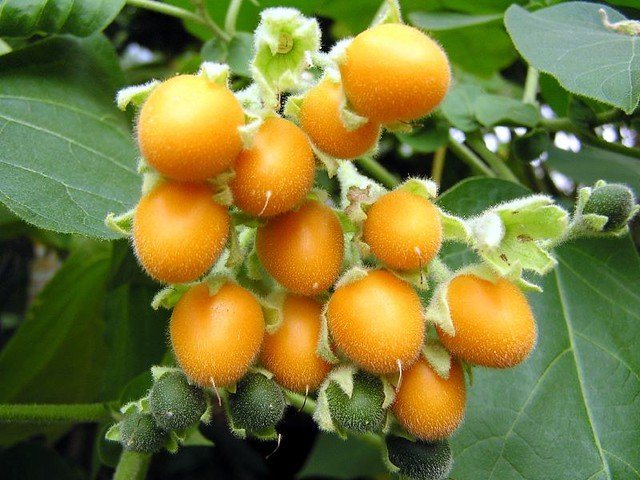

Cyphomandra tree (Cyphomandra abutiloides).
Growing seedlings
It is necessary to plant seedlings early, so you can start as early as January or early February.
Seed preparation
Before growing tomatoes, you need to prepare planting material. To increase the germination of seeds of Octopus F1, it is necessary to warm them up in advance. To do this, they are placed in an oven preheated to 50-60 degrees for several hours. Throughout this time, the oven temperature can be gradually increased to 70-75 degrees.
They can also be warmed up with water. To do this, the tomato seeds are poured into a small jar, which will need to be placed in a pot of hot water.
In addition, before planting, the planting seeds are disinfected. There are several solutions with which you can eliminate the infection:
- Aloe juice. It can be purchased at any pharmacy or squeezed out of the plant yourself. To prepare the solution, the juice must be diluted with water in equal proportions. It is necessary to keep the seed in the mixture for at least 15 hours.
- Fitosporin. A few drops of the drug must be mixed with 300 g of water, after which the planting material can be added to the prepared solution. It should be soaked for no longer than two hours.
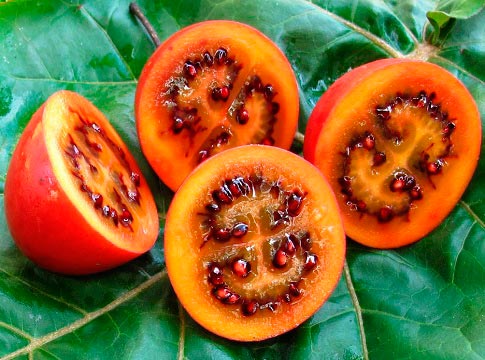

Soil preparation
It is necessary to plant seeds not in ordinary soil taken from the garden, but in pre-prepared soil. It is not so difficult to prepare the soil for planting seeds: in one part of the sod land, part of river sand and peat is added. The resulting mixture is thoroughly mixed and poured with a nutrient solution, the composition of which includes 10 grams of carbamide, 30 grams of superphosphate and 10 liters of water.
You should also disinfect the soil in advance. For this, it is treated with a weak manganese solution and special antifungal agents.
There is another way to disinfect the soil. In this case, the earth will have to be placed in a cloth bag and put in the oven for 20-30 minutes. This will help cleanse the soil of all pathogenic microbes.
Planting seeds
You can plant the seed of a tomato tree in small boxes or pots. To begin with, the containers are filled with moistened soil, after which small holes are made in it, in which tomatoes will be planted. The distance between the grooves should be about 5 cm. After planting the seed in the soil, the containers are covered with glass or plastic wrap to ensure an optimal level of moisture.
It is recommended to grow seedlings in a warm and well-lit room. The moisture level of the soil should be checked every day. If it is very dry, then it should be sprayed with a spray bottle.
Caring for the tsifomandra at home
Tsifomandra copes well with dry air. But she does not like missing care procedures and requires constant care, supplemented by pruning.
Watering and air humidity
Tsifomandra prefer stable soil moisture. Watering is carried out after the top layer of the soil has dried. After watering, water must be drained immediately, preventing it from stagnating in the pallets. Watering is best done in several passes, slowly trampling the soil, but avoiding waterlogging. This crop prefers morning watering.
In winter, watering is reduced in accordance with the temperatures of maintenance and the reduction in the growth rate of the plant, reducing their frequency by half and lowering the moisture of the soil, but not allowing it to dry out completely.
The approximate frequency of watering for the cyfomandra is 2 times a week in summer and weekly in winter.
Plants cannot be sprayed, there is no need to install humidifiers for them, because tamarillo tolerates dry air well. But it is better to protect them from heating devices.
Top dressing and fertilizer composition
An indoor tomato tree depends on fertilizing, their composition and quality much more than plants growing in open soil. It is advisable to feed Tamarillo with organic-mineral fertilizers, changing their composition depending on the stage of development of the cyfomandra - using complex fertilizers at the beginning of active growth and phosphorus-potassium fertilizers at the stage of budding and flowering.
In addition to the main macronutrients, the content of calcium, magnesium, zinc and copper is very important for cyfomandra. It is better to alternate mineral fertilizing with organic matter; for a plant during fruiting, only organic fertilizers (infusions of chicken droppings, mullein, humus preparations) are preferable.
If you prefer a simplified scheme, then use organic preparations for fruitful crops or organo-mineral preparations for tomatoes and other nightshades.
During the period of active growth, it is better to feed Tsifomandra weekly, with a half-reduced dose of fertilizer, or every 2 weeks - with a full dose.
For tsifomandra fertilizers are applied, most often, in liquid form and only after abundant watering. Long-acting fertilizers can be used.
Trimming and shaping the cypher
Tamarillo can be trimmed after the plant reaches a height of 1 m. Trimming 10-20 cm from the top of the stem allows you to limit growth: despite the fact that the tree will still grow, it will still fit into the ceiling height of the rooms.
The main pruning on tomato trees is done in the spring.After sanitary cleaning - removal of dry, damaged or thinned shoots - the formation itself begins, shortening all bare shoots so as to give the plant the desired shape and limit its size.
Digumandras are very good with oval tree-like crowns, at a height of approximately 1 m after pruning. If there is no desire or need to restrict the plant, then pruning it is not necessary, giving it freedom.
The size of the cyfomandra fruit can be controlled by plucking the ovaries at an early stage and leaving only 3-4 fruits in the cluster for larger berries.
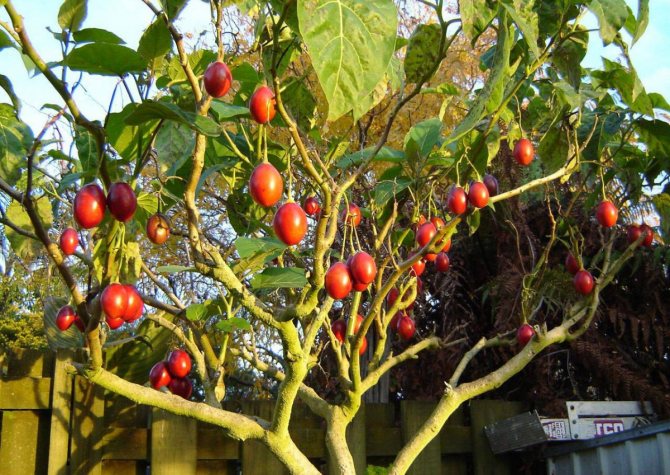

Tsifomandra "Sprut F1". <>
Planting, containers and substrate
Tsifomandra, rapidly growing the root system, require much more frequent transplantation than can be expected from such a large plant. It is better to grow them in very spacious containers, but anyway, when mastering the substrate in February or March, it is better to carry out an annual transplant.
Cypomandras develop normally only in loose, fertile soils. Suitable substrates for vegetables or tubs, citrus fruits or universal mixtures with loosening additives. If the soil mixture is made up independently, then you need to mix the sod soil with peat, sand and humus in a ratio of 3: 1: 1: 1.
Tsifomandry - tubular, requiring a lot of space for the root system. They can only be grown in very large pots, but the classic tub options are still preferable. Particular attention should be paid to the ratio of the width and height of the pot: cyphermandres develop better in wide, but not too deep containers or containers with equal values of indicators. Quality drainage holes are essential. The container tray must be deep.
When planting a plant, a high drainage layer must be laid on the bottom of the containers. The less the plants come into contact with the roots, the better, but the tsifomandra is not afraid of transplanting, as well as deepening (within reasonable limits): immersing the trunk to shorten it is quite acceptable for young trees. Pruning the lower leaves stimulates faster rooting.
Tsifomandry prefer mulching the soil or creating also upper drainage (stone chips, agroperlite, expanded clay, vermiculite, like sphagnum, are equally good, only natural stones are suitable for decorative materials). By creating a mulch layer, the space directly around the trunk is not covered.
After transplantation, the cyphermandra should be kept in a stable warm environment, at a temperature of 20 to 25 degrees and in diffused lighting.
Care features
Octopus f1 requires care, which consists in watering, fertilizing.
In addition, all measures must be taken to prevent disease and control insect pests.
This is especially necessary, since it is much more difficult to eliminate a common disease or pests that have already appeared.
Working with soil
Caring for a tomato tree in the open field must necessarily include loosening the soil. This should be done approximately 2-4 times per season.
A crust sometimes forms on the surface of the earth, which interferes with the rapid penetration of moisture and oxygen into the soil.
It often appears after rains and watering. Loosening helps to remove this crust.
The first time the procedure is carried out 10 days after the seedlings were transplanted into open ground.
Top dressing and watering
It is impossible to grow a tomato tree and get a good and high-quality harvest without regular watering and timely feeding.
Mineral and organic fertilizers are used.
Professional gardeners recommend feeding in 3-4 days during the growing season.
For the development of a hybrid, the following microelements are required:
- boron;
- iron;
- zinc;
- nitrogen;
- potassium;
- manganese;
- phosphorus.
The first fertilization is at the beginning of summer. Also, plants are fertilized with mullein, ammonium nitrate.
The regularity of watering is 2 to 4 times a week.At least 1 bucket of water is poured onto each plant.
With a rainy summer, watering is reduced. In especially hot and dry summers, you need to navigate by the condition of the soil. If it's too dry, water every day.
Stepping
The octopus tomato tree f1 does not need this procedure. Although some gardeners argue that pinching is necessary.
However, without it, the hybrid is capable of producing a better crop. In addition, pinching leads to a decrease in yield.
Treatment
Processing is required to enhance the development of the plant. Sometimes it happens that it begins to grow more slowly, the ripening of the fruit slows down.
A special spray solution will help. You can prepare it yourself:
- Pine shoots are placed in the freezer for several weeks.
- If necessary, take out and pour boiling water over it.
- Kept in hot reins for about 30 minutes.
- Thoroughly filter everything.
- For spraying, you need to dilute it in a ratio of 1: 3.
The solution is used during the formation of buds on the plant. In addition, so that the hybrid is no more than 3-4 m, its top is shortened.
It is necessary to get rid of dry and damaged leaves in time. To prevent the spread of diseases and pests.
Diseases, pests and problems in growing cyfomandra
Unlike their relatives from the Solanaceae family, cyfomandras are considered completely resistant to fungal diseases. Of course, with swampy soil, the tomato tree can suffer from rot and die, but on the other hand, it is almost not afraid of typical tomato diseases.
Of the pests, cyfomandra is especially fond of aphids, for the fight against which it is better to resort to chemicals only after all other options have been exhausted. Usually bio-methods, including infusions of nettle, garlic, ash, are effective. But aphids on this plant appear only with improper care.
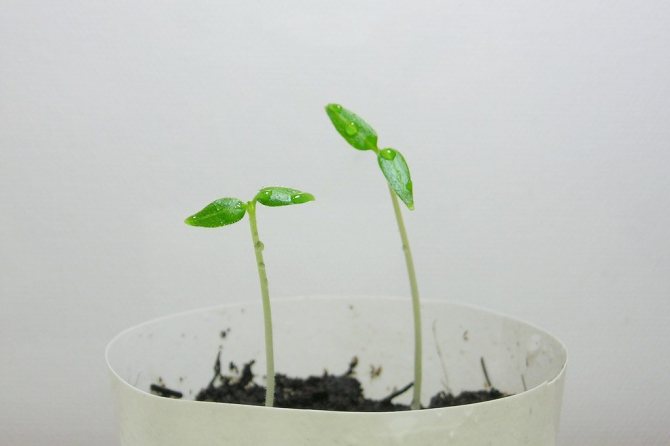

Tsifomandra can be grown from cuttings or the classic method - from seeds.
What you need to grow a tomato tree
To grow a beautiful f1 octopus tomato tree, you need the following:
- Seed material - purchased in the store;
- Covering material - it may be needed to protect the plant from frost at night. For regions with poor weather conditions, it is recommended to grow the tree in greenhouses;
- A barrel without a bottom. The peculiarity of the Japanese tree is that the seedlings are transplanted not into ordinary holes, like other plants, but in containers. Holes are made on the side of the barrel so that the root system is saturated with oxygen. Also, the holes prevent moisture stagnation after watering or rains. Instead of a barrel, you can use boxes.
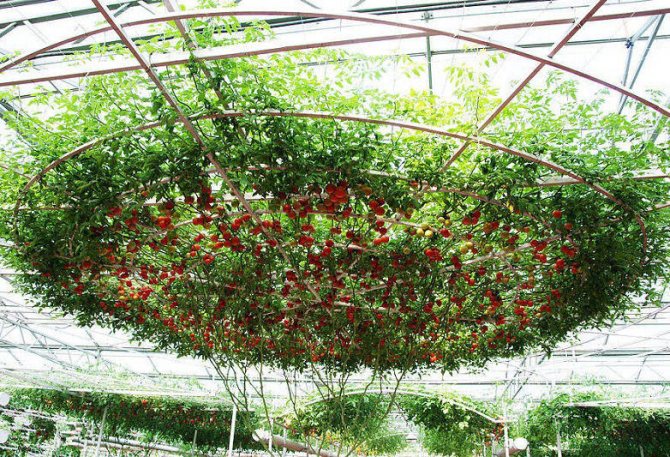

The technology of growing tomato octopus f1 contains some subtleties, and if you follow all the rules, you can grow a powerful fruit-bearing tree.
On a note! A huge tree is obtained only when grown in a heated greenhouse. It grows to enormous size with branchy branches. The tree spreads branches along the ceiling of the greenhouse. The yield of such a plant is amazing - 1000-1500 kg!
Tomato tree varieties with photos
The main varieties of the crop are:
- Miracle tree F1. Attracts gardeners with resistance to most known diseases. Under comfortable conditions, it reaches 2 meters and forms fruits weighing up to 280 g.
- Italian tree. Greenhouse view as it is sensitive to temperature. Requires the construction of supports, since it reaches 3 meters in height. Formation is carried out in 2 stems.
- Red Dragon. An early variety suitable for industrial and domestic cultivation. Under proper growing conditions, fruits can reach 300 g.
- Japanese tree or Octopus F1. The most popular variety due to its resistance to low temperatures, pleasant taste and long shelf life.
- Rotamer.The juiciness and sweetness of the fruit attracts lovers of salads and desserts.
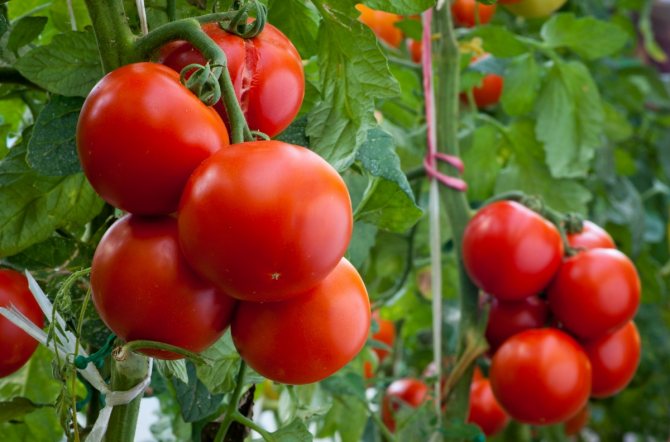

Rotamer
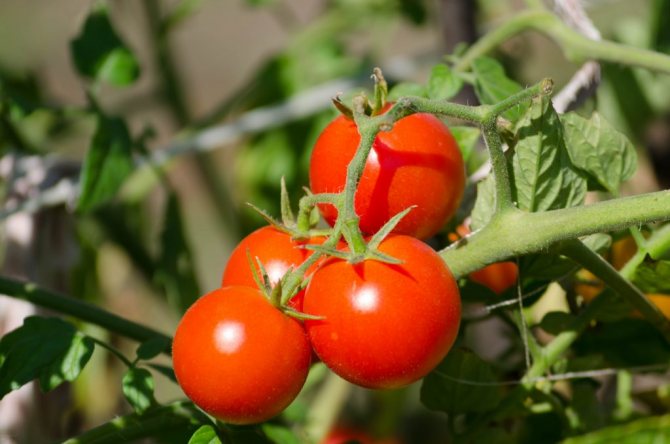

Octopus F1


Red Dragon
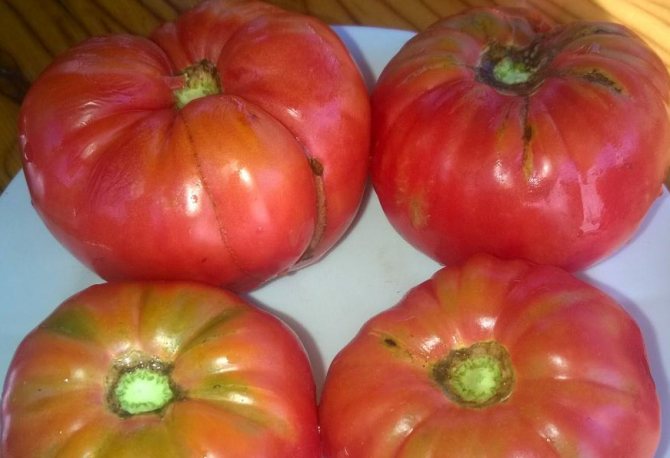

Italian tree
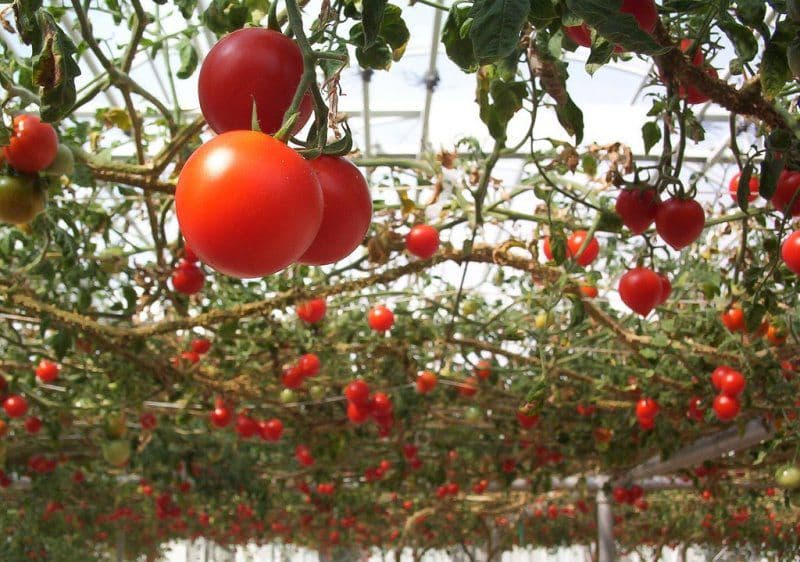

Miracle tree F1
Description and characteristics of the tomato tree
To get acquainted with the features of the tomato tree in more detail, you need to study its description. Such trees are classified as plants of the indeterminate type, which grow up to 2-3 meters in height. In the first two months after planting, the seedlings do not bear fruit, since it takes time for the crop to form. Many gardeners stepchildren planted young trees, but this cannot be done. Often early pinching negatively affects the growth of bushes and even leads to their death.
The main feature of tomato trees is that during their growth many branching shoots are formed on them.
This feature allows the planted bushes to grow to tens of square meters.
On each cluster of plants, several fruits weighing more than two hundred grams are formed. They have a rounded shape and are colored bright red. Their peel is reliably protected from cracking, and therefore the harvested crop is stored for a long time.



